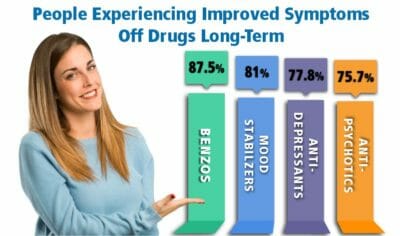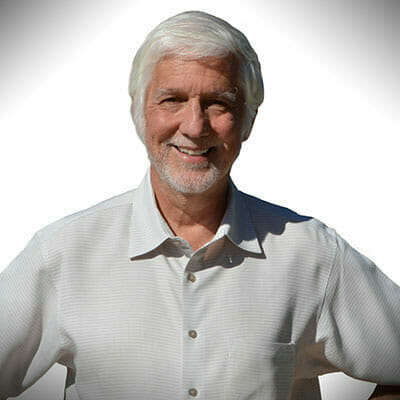What Is Halcion (Triazolam)?
Halcion (triazolam) is a drug manufactured by Pfizer which has been on the market since FDA approval in 1982. The drug has a high potential for dependency and abuse, because of its quick onset and euphoric, relaxing effects. It should only be taken very short-term use to avoid the problems of addiction, dependence, and withdrawal adverse effects. Halcion was intended to be taken for no more than 7-10 nights in a row. The FDA warns that if taken longer, the user will experience rebound insomnia worse than before the drug was started. If taken for more than 10 days, the user will experience increased daytime anxiety.1
Like other hypnotics used as sleeping aids, some people experience sleep-walking, sleep-driving, talking on the phone, going out, sleep-shopping, having sex, and other activities while under its influence that they do not remember later. These complex behaviors are clearly stated on the FDA’s label.1
The following information on side effects, withdrawal symptoms, and other topics may help to understand more about this drug before deciding to start or stop taking Halcion.
What Is Halcion (Triazolam) Used For?
Halcion, like some other sedative hypnotics, is primarily used as a short-term treatment for insomnia.
Before beginning a person on a prescription for this class of drug, studies on sleep and stress in the field of biological psychiatry recommend a thorough evaluation of the patient to ensure that physical conditions or illness have been ruled out as causal agents and that non-addictive substances have been recommended over prescription drugs in treating the patient’s insomnia.4
This commonsense approach should be heeded if you are experiencing symptoms of insomnia, and have not requested a thorough physical examination yet, or your physician has not suggested non-addictive sleeping aids prior to prescribing Halcion.
Halcion (Triazolam) Alternative Names and Slang
Tranquilizers such as Halcion are available as street drugs, where they can be generally referred to as “tranks,” or specifically for Halcion, “Up-Johns,” a play on the name of the original pharmaceutical manufacturer, and the drug’s euphoric effects.
Poly-drug users are especially at risk when combining Halcion with other CNS depressants, such as alcohol or opiates. Sometimes Halcion is used in this way to either get a more intense high or to self-medicate where there is a desire to quash unwanted mental conditions quickly (yet temporarily).
Halcion (Triazolam) Side Effects
When taken as prescribed, the drug’s effectiveness wanes quickly over a week or so. This is referred to as the downregulation effect of such tranquilizers, and the user may begin to experience their prior symptoms even more intensely than before they started taking the drug.
Such rebound effects may include:
- Worsened insomnia, Increased periods of wakefulness at night, interrupted sleep
- Hallucinations
- Worsened daytime anxiety
- Mania
- Sleep deprivation symptoms; fatigue, mental fog, altered perception, drowsiness, slow learning, inability to concentrate, irritability, mood swings, forgetfulness, etc.
The initial and developing side effects of Halcion include:
- Profound sedation
- Euphoric high
- Amnesia
- Calmness
- Sleepiness
- In the elderly population, side effects are more pronounced and include dizziness, accident-prone, loss of coordination, and lingering effects of sedation.
- The emergence of new thinking or behaviors including decreased inhibition, aggression, hallucination, impulsiveness or recklessness similar to that of a drunken state, depression, worsened depression, suicidality, etc.
- Depersonalization is characterized by feelings of detachment from self, sometimes as if outside one’s body and observing but not recognizing self, separation from one’s own feelings or thoughts as their own, and loss of the sense of self-identification.
- Sleep-walking, traveler’s amnesia, sleep-cooking, sleep-driving, etc., can’t be remembered the next day.
- Hallucinations
- Cravings for more of the drug
- Severe allergic reactions are occasioned by the following: swollen throat, lips, tongue, throat closing, nausea, vomiting, and airway obstruction (can be fatal).
- Tachycardia
- Prickling feeling like pins and needles on the skin
- Loss of coordination
- Lightheadedness
- Headache
- Coordination disorders, ataxia
Other side effects besides the ones listed here may emerge. If you or a loved one has observed these or other concerning side effects, seek immediate medical assistance.
Halcion Withdrawal and Pregnancy: SPECIAL CAUTION
A woman planning a pregnancy, or of child-bearing age who is taking a sleeping aid such as Halcion, would be well-advised to complete a Halcion withdrawal program before conception, as the drug may cause harm to the baby and is excreted into breast milk.
Discontinuing/Quitting Halcion (Triazolam)
If discontinuing or quitting Halcion has been difficult, or if the drug was continued past the 10-day mark, medical detox is strongly indicated.
Halcion is a benzodiazepine drug, and this class of drugs is thought to act primarily on the GABA receptors in the brain. When the body becomes used to having the drug in the system, there is a profound effect and influence on the neurochemistry of the CNS. This influence is thought to be why stopping the drug is linked to such severe physical, emotional and mental discomforts and malaise, and unusual or even bizarre responses and behaviors.
Stopping any agent which has created this dependency can be not only extremely difficult because of the levels of discomfort involved but can be dangerous to yourself or to those around you to attempt this on your own. Always seek medical assistance for coming off benzodiazepines such as Halcion.

 Tremors, convulsions, seizures*
Tremors, convulsions, seizures* The consequences of sleep deprivation are well known. Insomnia can present a huge challenge to the quality of life and to health. This can result in a lowered ability to function on the job, chronic fatigue, and other factors. It may be time to consider effective ways to correct the problem. The best solutions to such problems are ones that don’t introduce further harm such as addiction or lingering unwanted side effects. But these can be overcome at Alternative to Meds Center.
The consequences of sleep deprivation are well known. Insomnia can present a huge challenge to the quality of life and to health. This can result in a lowered ability to function on the job, chronic fatigue, and other factors. It may be time to consider effective ways to correct the problem. The best solutions to such problems are ones that don’t introduce further harm such as addiction or lingering unwanted side effects. But these can be overcome at Alternative to Meds Center. Getting these addressed as part of a comprehensive Halcion withdrawal program is the key to lasting relief.8
Getting these addressed as part of a comprehensive Halcion withdrawal program is the key to lasting relief.8







